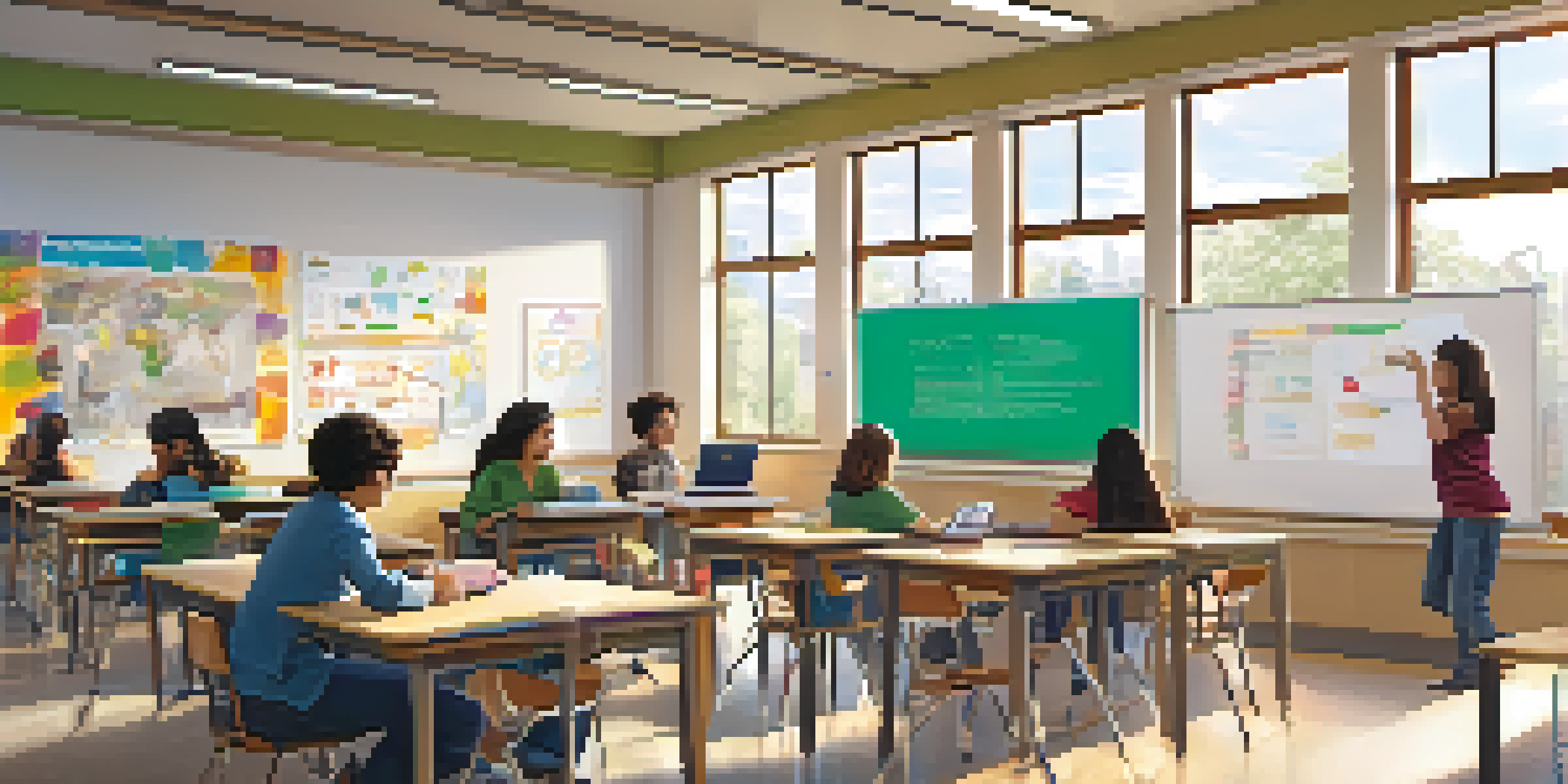The Role of Feedback in Blended Learning Success

Understanding Blended Learning and Its Components
Blended learning combines traditional face-to-face instruction with online learning elements. This approach allows for flexibility and personalization, catering to various learning styles. By integrating technology, educators can create a more dynamic and engaging learning environment that fosters collaboration and independence.
The Importance of Feedback in Educational Settings
Feedback is crucial in any learning process, providing students with insights into their performance. It encourages growth by highlighting strengths and identifying areas for improvement. When delivered effectively, feedback can motivate learners, helping them to understand their progress and set achievable goals.
Blended Learning Enhances Flexibility
Blended learning merges traditional and online instruction, offering personalized experiences that cater to diverse learning styles.
Types of Feedback in Blended Learning Environments
In blended learning, feedback can be both formative and summative. Formative feedback occurs during the learning process, helping students adjust their strategies in real time. Summative feedback, on the other hand, evaluates overall performance at the end of a learning unit, providing a comprehensive view of student achievement.
How Timely Feedback Enhances Learning Outcomes
Timeliness is key when it comes to feedback; students benefit most when they receive it soon after submitting their work. Immediate feedback allows learners to make quick adjustments, reinforcing their understanding while the material is still fresh. This rapid response can significantly boost confidence and engagement.
Timely Feedback Boosts Engagement
Providing immediate feedback helps students adjust their learning strategies promptly, reinforcing understanding and building confidence.
Utilizing Technology for Effective Feedback
Technology plays a pivotal role in delivering feedback in blended learning. Tools like learning management systems can automate feedback processes, providing instant responses to quizzes and assignments. Additionally, platforms for peer review encourage collaborative feedback, allowing students to learn from each other.
Creating a Feedback Culture in Blended Learning
Establishing a culture of feedback in blended learning environments encourages open communication. Instructors should model constructive feedback practices and invite students to share their thoughts. This two-way street not only enhances learning experiences but also builds trust and rapport among participants.
Technology Transforms Feedback Delivery
Innovative tools in blended learning facilitate efficient and collaborative feedback, enhancing the overall educational experience.
Challenges of Providing Feedback in Blended Learning
While feedback is essential, it can present challenges in blended learning setups. Instructors may struggle to provide timely feedback due to larger class sizes or varying student schedules. Additionally, the lack of face-to-face interaction can sometimes hinder the depth of feedback, making it crucial to find effective strategies to overcome these hurdles.
The Future of Feedback in Blended Learning
As blended learning continues to evolve, the role of feedback will only grow in importance. Innovations in technology will likely enhance the ways educators provide feedback, making it more personalized and interactive. Ultimately, effective feedback will remain a cornerstone of successful blended learning experiences, shaping the future of education.